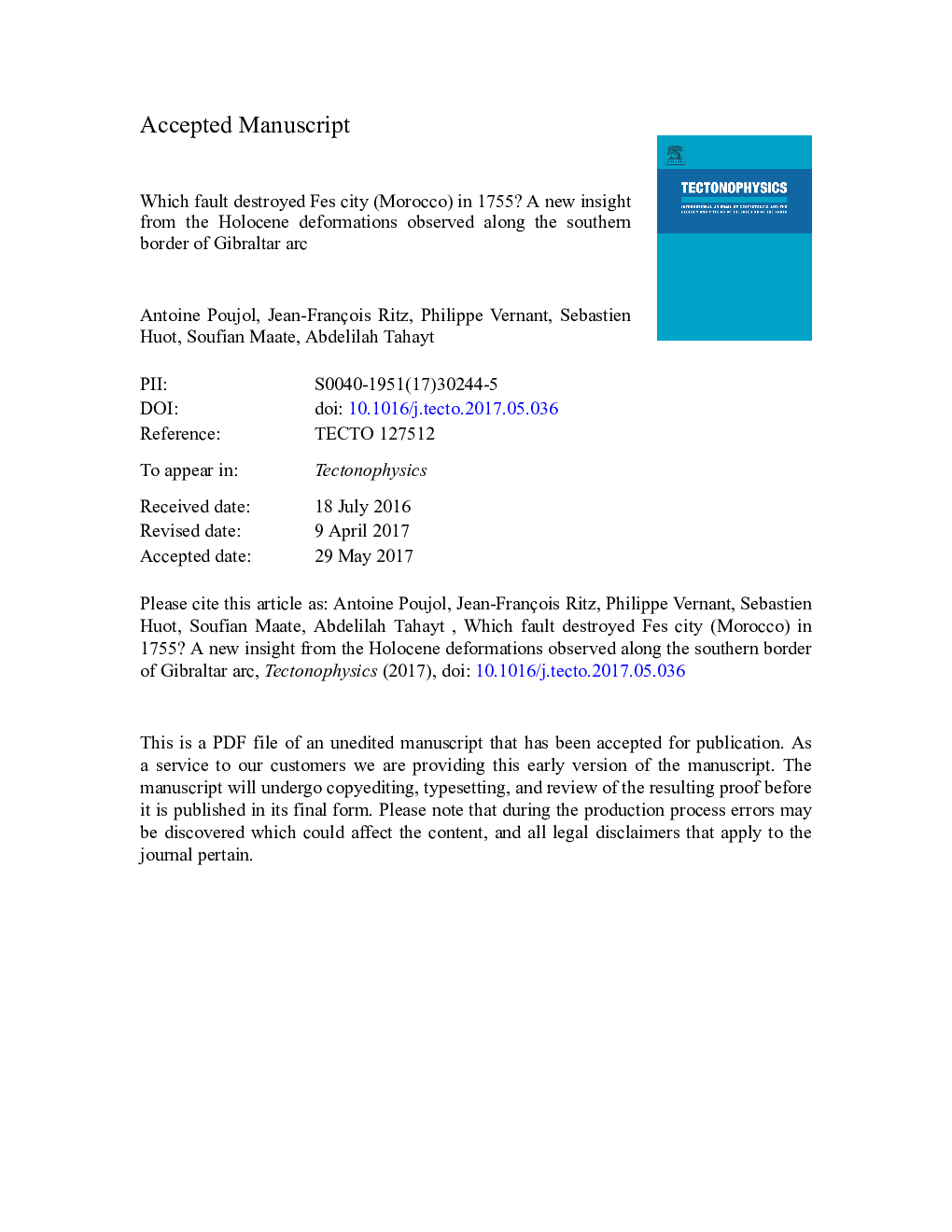| Article ID | Journal | Published Year | Pages | File Type |
|---|---|---|---|---|
| 5781543 | Tectonophysics | 2017 | 33 Pages |
Abstract
In this paper, we present the first estimate of the Holocene deformation along the southern front of Gibraltar arc (Morocco) and the first field constraints on the local 1755 CE Fes-Meknes surface rupturing earthquake which could be associated to the “Great Lisbon Earthquake” (M > 8.5) in November 1st, 1755. Using satellite imagery, aerial photographs and field investigations, we carried out a morphotectonic study along the ~ 150 km-long Southern Rif Front (SRF) to identify the most recent evidences of tectonic activity. Analyzed offset alluvial deposits confirm that (i) the last ~ 5 ka cumulative deformation leading to a slip rate of ~ 3.5 ± 1 mm/yr for this segment of the SRF is consistent with the GPS derived horizontal shortening rate of 2-4 mm/yr and (ii) a recent major earthquake ruptured a ~ 30 km-long segment along the SRF. Based on deposits dating and historical seismicity we propose that this seismic event occurred in 1755 as a local earthquake. Even though this 1755 local event cannot be considered as a strong aftershock of the main Lisbon seismic event (M > 8.5), their temporal closeness, their occurrence under the same convergent stress regime (~ NNW-SSE-oriented compression) and the fact that Fes-Meknes area was strongly shaken during the Lisbon earthquake, raises the question of the possible triggering of the Fes earthquake. Anyway, our new results suggest that most of the Nubia-Rif belt convergence is accommodated by the SRF, making it potentially the most destructive structure of the Rif.
Keywords
Related Topics
Physical Sciences and Engineering
Earth and Planetary Sciences
Earth-Surface Processes
Authors
Antoine Poujol, Jean-François Ritz, Philippe Vernant, Sebastien Huot, Soufian Maate, Abdelilah Tahayt,
